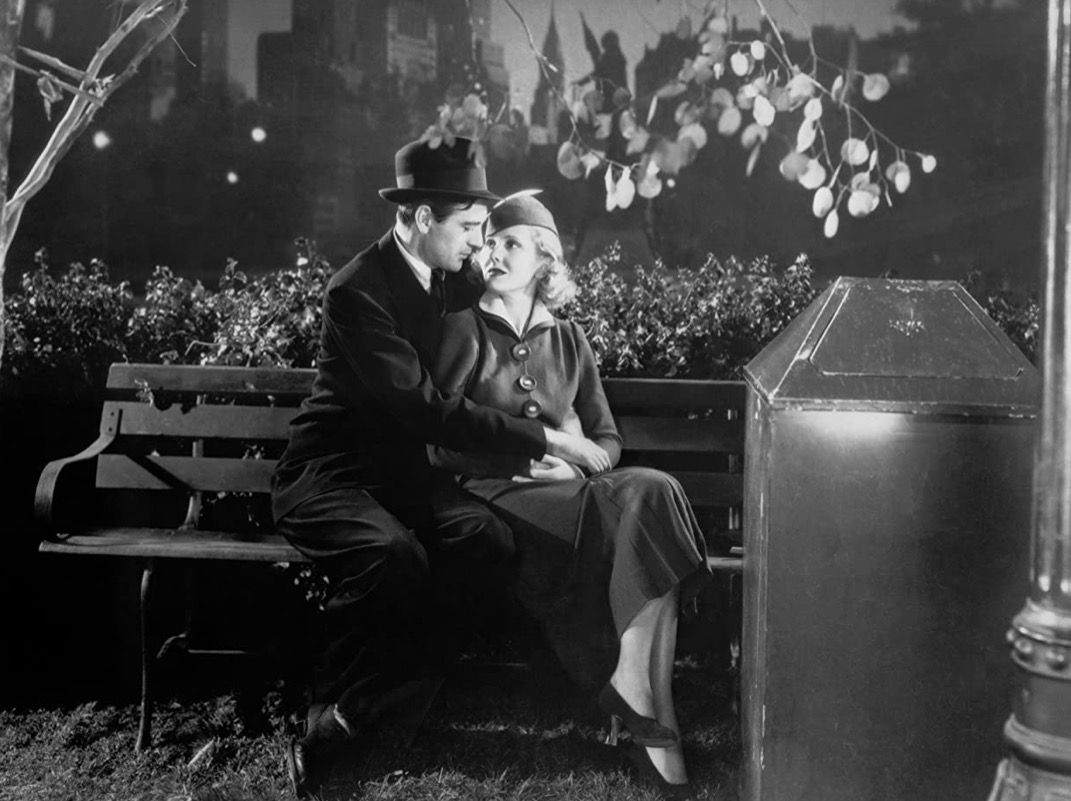
Disney
With the curtain quickly closing on the college football season, Disney + recently released “Safety,” based on the true story of former Clemson football player Ray McElrathbey (2005-07), who not only earned his degree in three years and played football for the Tigers but also took over custody of his younger brother Fahmarr and acted as his legal guardian while doing so.
The film directed by Reginald Hudlin and written by Nick Santora is meant to be inspirational and even heart-tugging in the same vein of movies like “The Blind Side” and “Greater.”
“Safety” is comparable to those films, but I’d argue “The Blind Side” has the best production values of the three and that the story in “Greater” has more depth and is more artfully told, but if you are looking for a solid movie set around the trappings of college football “Safety” is a safe, simple, feel-good choice.
The movie is enjoyable, and there is good chemistry between lead Jay Reeves as college freshman Ray and the charismatic Thaddeus J. Mixson as his younger brother Fahmarr, who is left alone when their mother enters drug rehab. There is also some chaste heat between Reeves and love interest Corinne Foxx as Kaycee Stone, who writes a newspaper article about Ray and Fahmarr’s plight.
The article provokes the townspeople of Clemson to rally around Ray and Fahmarr, offering help in a number of ways like all good folks would do. However, such help is viewed by the NCAA as illegal entitlements, putting Ray’s college eligibility into question.
At the climax of the movie Ray, Fahmarr, his teammates, and the Clemson coaches stand united in front of an NCAA infractions committee who are taxed with ruling on Ray’s football eligibility.
I won’t give away the conclusion even though the story was well publicized around 15 years ago.
James Badge Dale plays the composite character of Coach Brad Simmons, whose backstory is cribbed from current Clemson head coach Dabo Swinney’s. Dale’s performance is one of the strongest in the film.
“I grew up in $8-a-night motels with my mom until we got evicted. So when I played college ball, she slept on a cot in my room,” Simmons tells Ray, which is similar to Swinney’s history. Swinney was a receivers coach at Clemson during McElrathbey’s time at Clemson. While he mostly played defensive back during his time with the Tigers, he did spend some time at wider receiver, so he and Swinney would have known each other fairly well.
Does the movie get all the ins and outs of college football right?
No, but I can’t think of a movie about college football that ever has.
Is the movie too sentimental?
That all depends on your taste. The film is intended for all ages, so a good bit of sandpaper was used to smooth out the rougher edges of the challenges Ray and Fahmarr no doubt faced in real life.
All that said the film’s primary performers are much like Disney animated characters in that they are crafted in such a way that they all end up being stereotypically endearing or mean.
“Safety” is in no way a great film, but it is a pleasing story, crafted well enough to make for a nice family night of viewing. In short, it fits in well with the type of family home entertainment Disney has been offering since the 1950s.
(PG) 1 hr. 59 min.
Grade: B-
New In Local Movie Theaters
- One Night in Miami – (R) 1 hr. 54 min. (watch trailer)
Playing at: Malco Razorback, Rogers Towne
Classic Corner: Capra film “Deeds” likely sparked characterization of key Superman characters

Gary Cooper and Jean Arthur in Mr. Deeds Goes to Town / Columbia Pictures
Like most film fans, I enjoy revisiting movies for a number of reasons.
Sometimes it’s for comfort. Other times it’s to stave off boredom, or to try and recapture that feeling I had the first time I saw the movie. Maybe it’s an attempt to share that feeling with family or a friend by watching the movie with them.
Since March when the coronavirus came onto our collective doorstep, I’ve re-watched many a movie just to while away a few hours and to relieve the stress.
Like with most trivial things in life, the law of diminishing returns usually creeps in when re-watching films, even if it’s a movie I love.
However, the great thing about rewatching a movie is that even though it’s familiar, each experience can be a bit different if you allow it to be because as a person, you’ve likely become a bit different since you’re last viewing.
Sometimes though, you rewatch a film, and you are surprised by something you had never noticed before.
This week I was blown away by something I had never noticed before when viewing the 1936 Frank Capra-directed classic “Mr. Deeds Goes to Town.”
I had seen the movie – at least in parts — several times before, but I had never made the connection or realized the influence it had on three of my favorite movies — “Superman: The Movie” from 1978, “Miracle on 34th Street” from 1947, and “Tarzan’s New York Adventure fro 1942.”
The latter two movies are influenced by the sanity hearing for Gary Cooper’s Longfellow Deeds character at the conclusion of the film, whose screenplay was written by Academy Award winner Robert Riskin.
I might tackle that subject another time, but for the moment I want to focus on the mighty influence this film not only had on the aforementioned Superman movie but also almost certainly on the creation of the comic book character and his supporting cast by Jerry Siegel and Joe Shuster.
The film’s message explores one of Capra’s favorite subjects, the goodness and wisdom of the common man, and that just because Deeds wants to live a simple life doesn’t make his reasons for doing so any less noble than that of a so-called sophisticate.
The plot is a play on the old country mouse goes to the big city children’s tale as tuba-playing, amateur poet Deeds (Cooper) inherits $20 million from his late uncle Martin Semple, who lived the high life in New York City.
Much of the movie concerns Deeds cleverly thwarting various sycophants from siphoning off or outright stealing his newfound fortune, but there is also Jean Arthur’s role as reporter/columnist Louise Bennett, a beautiful but cynical know-it-all type who doesn’t mind insinuating herself into a situation to get a story.
Her editor MacWade (George Bancroft) is a fast-talking, overbearing blow-hard, who enjoys brow-beating his staff to encourage them to get the story.
There is a scene where the blustery MacWade is blistering his news staff, cajoling them to get the lowdown on just who Deeds is any way they can. I had seen that scene several times, but it only dawned on me in my most recent viewing that director Richard Donner apes it almost down to the letter in “Superman: The Movie” some 42 years later when the irascible Daily Planet editor Perry White (Jackie Cooper) goes on a tirade to encourage his news staff to get an exclusive on the red-caped hero who made his fabulous debut the night before.
Noticing this obvious homage, which I had never read about our put together for myself before, sparked the wheels turning in my head. Not only did Capra’s film influence the Superman movie of the 1970s but very likely the creation of the character and his cast itself in the late 1930s.
Siegle’s creation of Clark Kent, Lois Lane, and the character that eventually became Perry White are on the screen as Deeds, Bennett, and McWade nearly two years before they debut in the comics.
Siegel and Shuster’s original idea for Superman was greatly different from what was eventually published in June of 1938. The character was originally an amoral villain bent on world domination, but sometime between 1932 and 1938, Siegel and Shuster radically reworked their character — and his supporting cast — into the champion of justice the world first experienced in Action Comics No. 1 in June of 1938.
Let’s not forget that “Mr. Deeds Goes to Town” debuted in 1936 and was a hugely successful film prior to Siegel and Shuster selling their Superman strip to Detective Comics for the sum of $130 in 1938. Yeah, they got taken to the cleaners on that deal.
Siegel and Shuster remade their Superman into hero who disguised him self as the mild-mannered Clark Kent. Just like Cooper’s understated portrayal of Deeds was much more than he seemed to be on first impression, Kent was much more than he appeared to be in his effete disguise. Had Cooper’s Deeds worn eye glasses, his look and manner would have been what we know today as Clark Kent.
Read the early adventures of Superman and then watch Arthur’s performance as the fast-talking and sexy Bennett, and see if the two don’t remind you of each other. The only real difference is Lois is a brunette, and Arthur’s Bennett is a blonde, but the hair styles are nearly identical.
There is some thought that Siegel based Lois on the Torchy Blane news reporter character from a series of nine cheap films made from 1937 to 1939, but it seems the Blane character was also “borrowed” from Arthur’s portrayal of Bennett in 1936. The actresses who portrayed Torchy were near lookalikes to Arthur.
The hard-nosed newspaper editor is a stereotype today, but no doubt Bancroft’s performance in “Deeds” helped mold that stereotype of which Perry White (originally named Tom Taylor for about a year in the comics) is the standard bearer.
Once noticed, the similarities are truly unmistakable.
Both Siegel (1996) and Shuster (1992) have passed away, so there is no way to verify this hypothesis, but again with the “Deeds” film debuting two years before the publication of the Superman strip and considering the popularity of the movie, I think the connection is a solid one.
Even if my conjecture is off base, “Mr. Deeds Goes to Town” is a classic morality play that every fan of the golden-age of movies and comic books ought to watch.

